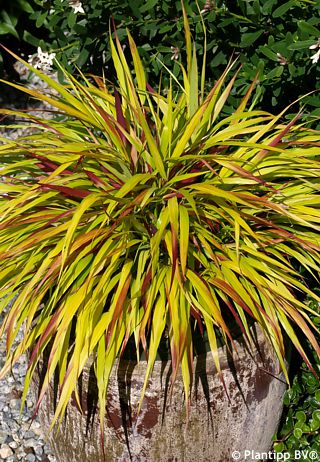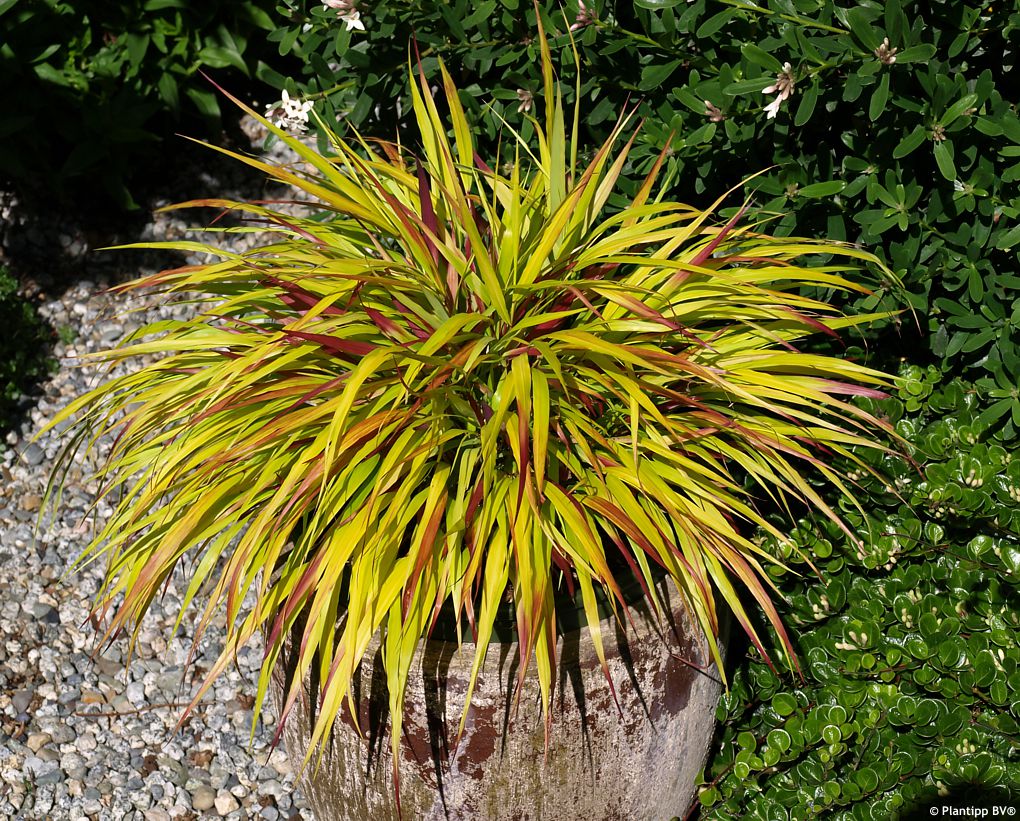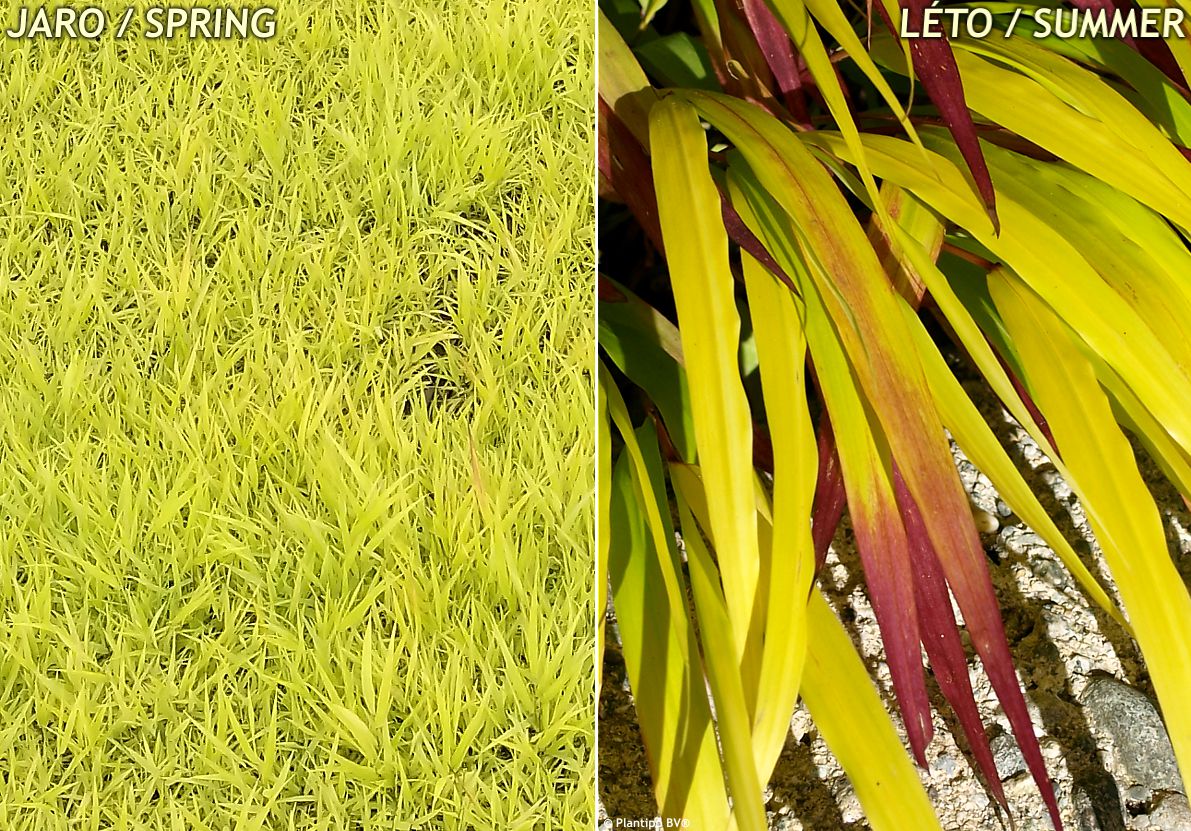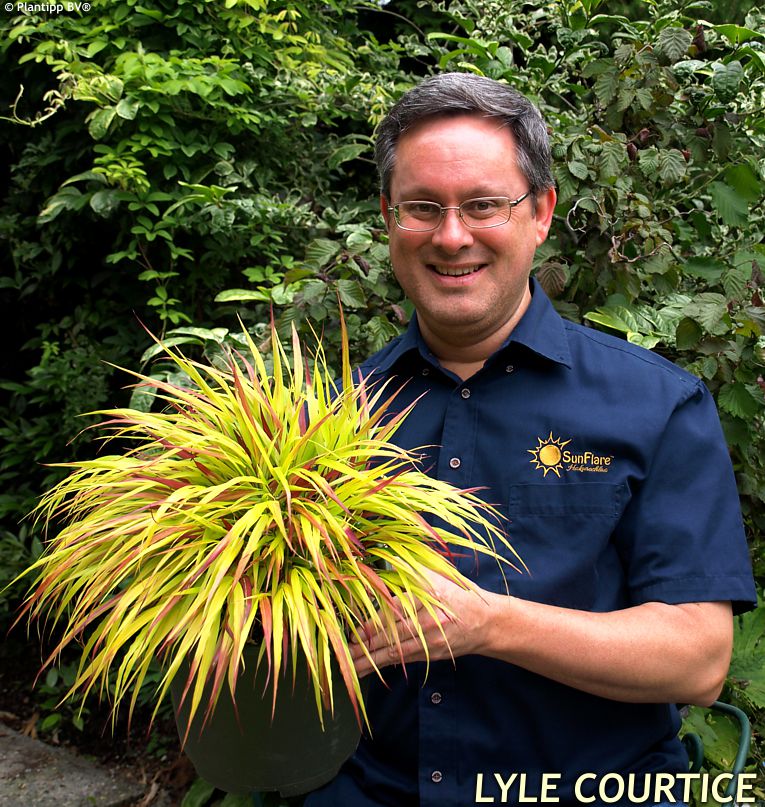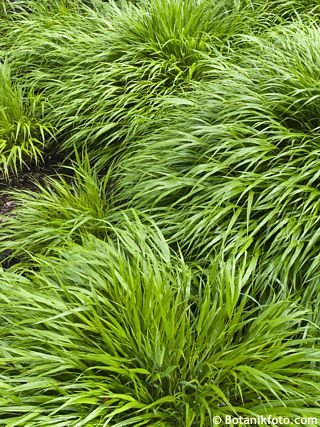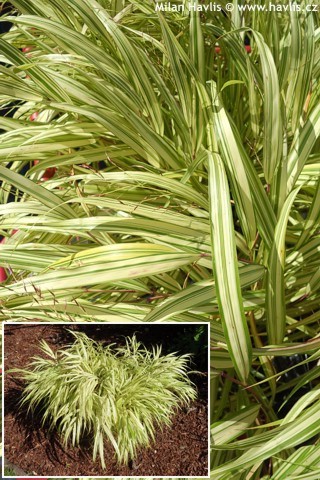Hakonechloa macra 'Habsf1007' SUNFLARE™ Hakone grass, Japanese forest grass


Hakonechloa
Questing after the best word describing this beautiful grass, I hesitate between showy and spectacular. Hakone grass possesses a unique quality that, despite its simple appearance, or perhaps just because of it, can look absolutely luxurious, especially when planted in large clumps or over vast areas. This is also why it is so popular among landscape designers. It forms dense, albeit rather slow-growing clumps that offer fullness, yet softness, an airy effect, and above all movement as its stems sway even in the slightest breeze. It originates from Japan and was first described in 1913 by Japanese botanist Bunzō Hayata (1874-1934), to whom the world of botany owes much for his work studying the flora of Taiwan and Japan. The scientific name hakonechloa is a compound of the name of Mount Hakone in Honshu, where the plant was first discovered growing near its hot springs, and the Greek term for grass, chloe.SUNFLARE™ variety of Hakonechloa macra was found as a spontaneous mutation of the All Gold variety in 2010 by Canadian avid collector and grower of rare plants Lyle Courtice. He is known for his meticulousness and thoroughness when it comes to adhering to precise procedures in propagating his unique plants, for which he often travels far away to the mountains of Japan and China. He owns HarkAway Botanicals in the province of British Columbia, and the name of his company reflects the nature of its very owner because the old English word "hark" in conjunction with "away" means "to listen attentively" or "to perceive carefully," which is exactly what he does on his expeditions – he perceives the wild nature and carefully observes everything around him so as not to miss any interesting plants, which he is happy to share with us.
It is mainly used as a colorful undergrowth for large shrubs, such as Japanese maples, multi-stemmed birches, golden rain trees, or similar species with exposed lower branches. Due to its similarity to bamboos, it is a welcome companion in Japanese gardens, where it complements the neatly trimmed boxwoods and Japanese azaleas, and near dry riverbeds where it evokes the effect of falling water.
It looks best in mass plantings and as it does not multiply too quickly, we recommend planting more plants together, preferably nests of three. However, be cautious – Hakone grass forms thin rhizomes, which spread over time, and if you find it somewhere it shouldn't be, pull it out. The tips of young stems can puncture even mulching fabric, so do not rely too much on it to prevent spreading. Still, it is not rated as invasive.
Hakonechloa originates from Japan, where it naturally grows in moist places in forests and on rocky cliffs. It does best in partial shade, but with sufficient watering it will also grow in full sun. Too dark, shaded locations are not suitable – it tends to be sparse there, and variegated varieties lack color intensity. It requires well-drained soil to prevent it from rotting in winter. The soil should be humus-rich, otherwise, feed it at least once in the season with a slow-release fertilizer. In early spring, cut back all stems to 2-3 cm above the ground after the frosts. It is hardy to about -29 °C (USDA zone 5) and is also suitable for outdoor containers in partial shade with regular watering.
Last update: 03-01-2025
Goods are shipped all over Europe. For Russia and U.K. and for further details please read about SHIPPING OPTIONS HERE.
Are you interested in a serious discount for orders NOV-FEB? Check your options here.
THE PRICES INCLUDE VAT of 15%. For quick conversion you can use 1 CZK = approx. 0.04 EUR
- STANDARD QUALITY - Plants of this group are 1st class quality with number of branches and overall density adequate to their size and age, considering they were container grown.
- DE LUXE QUALITY - This label guarantees a luxurious quality of manually selected plants that, compared to their height and age, are exceptionally dense and beautiful.
- EXTRA - These plants are usually mature and bigger specimens with exceptional overall appearance.
- STANDARD (as described in the plant form) means a tree with a trunk of 190-210 cm and a crown at the top, unless specified differently. The commercial size for trees is their girth measured in the height of 1m from ground.
- HOBBY - These plants are of the same quality as our standard-quality plants but younger and therefore cheaper.
- SHRUB - a woody plant with branches growing bushy from the ground level.
- HALF-STANDARD or MINI-STANDARD - a small tree with shorter trunk, its size is usually specified.
- FEATHERED - These are trees with branches growing already from the base of the trunk and up along the stem.
- GRASSES and PERENNIALS - Sizes given usually read the diameter of the pot or the clump, as specified.












